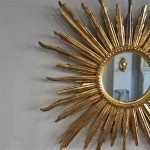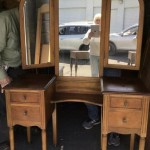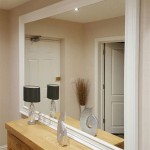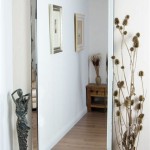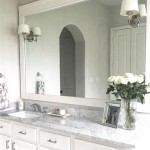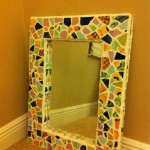How High Do You Hang a Vanity Mirror?
Determining the ideal height for a vanity mirror involves considering several factors, including user height, eye level, and the mirror's size and shape. A correctly positioned mirror ensures comfortable use, avoiding unnecessary bending or straining. This article explores the key considerations for determining the appropriate height for various individuals and mirror types.
The primary factor influencing mirror height is the user's eye level. Ideally, the mirror's center should be positioned at or slightly below the user's eye level. This allows for a comfortable and natural viewing angle, encompassing the entire face and upper body without requiring excessive head tilting.
User height plays a significant role in this calculation. Taller individuals naturally have a higher eye level than shorter individuals. Therefore, a mirror positioned appropriately for someone six feet tall would likely be too high for someone five feet tall. This necessitates adjusting the mirror height according to individual needs.
Mirror size and shape also impact optimal placement. Large mirrors intended to reflect the entire body require a lower placement compared to smaller vanity mirrors designed primarily for facial viewing. Similarly, the shape of the mirror, whether rectangular, oval, or round, can influence the ideal center point for optimal viewing.
A practical approach to determining the appropriate height involves measuring the user's eye level. This can be accomplished by having the individual stand straight and look forward while a second person measures the distance from the floor to the center of their eyes. This measurement serves as a baseline for positioning the mirror's center.
For multiple users sharing the same vanity, finding a compromise height is essential. Averaging the eye levels of all users can provide a reasonable compromise. Alternatively, installing an adjustable tilting mirror allows each individual to customize the angle to their preferred height, accommodating varying needs.
The height of the vanity itself must also be taken into account. Typical vanity heights range between 30 and 36 inches. The mirror should be positioned above the vanity, leaving enough space for accessories and toiletries. A gap of a few inches between the vanity top and the bottom edge of the mirror is generally recommended.
In addition to these practical considerations, aesthetic factors also play a role. The mirror should complement the overall bathroom design and scale. A large, ornate mirror might overwhelm a small bathroom, while a small mirror might appear insignificant in a larger space. Careful consideration of the mirror's size and style in relation to the surrounding environment is crucial.
Lighting is another critical factor. The mirror should be positioned to maximize natural light sources while minimizing glare. Supplemental lighting fixtures, such as sconces or overhead lighting, can be strategically placed to enhance visibility and create a flattering illumination.
Different types of mirrors require specific considerations. Medicine cabinets with integrated mirrors are typically installed at standard heights based on average user dimensions. However, adjustments can be made during installation to accommodate individual needs. Extending mirrors, designed for magnified viewing, often have adjustable arms allowing for flexible positioning.
For frameless mirrors, precise measurements and careful installation are crucial for a clean and polished look. The edges of the mirror should be aligned perfectly with the surrounding walls and fixtures. Professional installation is often recommended for frameless mirrors to ensure a seamless finish.
Beyond the numerical measurements, achieving the perfect mirror height often involves a degree of personal preference. Once the general guidelines have been followed, minor adjustments can be made based on individual comfort and aesthetic considerations. Observing the reflection from different heights and angles can help determine the most flattering and functional position.
In commercial settings, such as hotels or salons, adherence to accessibility guidelines is paramount. Regulations often dictate specific height requirements for mirrors to accommodate individuals with disabilities. Consulting relevant building codes and accessibility standards ensures compliance and promotes inclusivity.
The process of determining the ideal vanity mirror height involves a combination of objective measurements and subjective preferences. Considering factors such as user height, eye level, mirror size, vanity height, and lighting conditions, along with personal comfort and aesthetic appeal, ensures a functional and visually pleasing result.
By carefully considering these factors and following the outlined guidelines, individuals can achieve optimal mirror placement, enhancing both the functionality and aesthetics of their bathroom space. Regular evaluation and adjustments, particularly in multi-user environments, ensure continued comfort and usability for all.

How High Should You Hang The Mirror In A Bathroom With Photos Design Morsels

How High To Hang A Bathroom Mirror Homemate Mirrors

Bathroom Mirror Size Calculator

How High To Hang A Vanity Mirror Sparrow Stoll

How To Pick And Hang The Perfect Bathroom Mirror Roomhints

How High To Hang A Vanity Mirror Sparrow Stoll

How To Pick And Hang The Perfect Bathroom Mirror Roomhints

How High To Place Your Bathroom Fixtures Inspired Style

How To Pick And Hang The Perfect Bathroom Mirror Roomhints

How High To Hang A Vanity Mirror Sparrow Stoll

